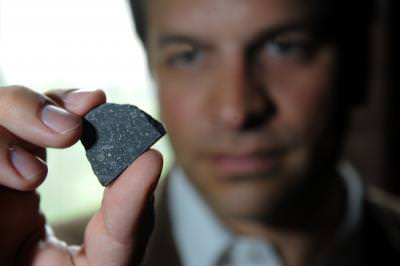[/caption]
Maybe we’re not as old as we think (or feel?). The interstellar stuff that was integrated into the planets and life on Earth has younger cosmic roots than theories predict, according to the University of Chicago scholar Philipp Heck and his international team of colleagues.
Heck’s team analyzed 22 interstellar grains from the Murchison meteorite. Dying sun-like stars flung the Murchison grains into space more than 4.5 billion years ago, before the birth of the solar system. Scientists know the grains formed outside the solar system because of their exotic composition.
“The concentration of neon, produced during cosmic-ray irradiation, allows us to determine the time a grain has spent in interstellar space,” Heck said. His team determined that 17 of the grains spent somewhere between three million and 200 million years in interstellar space, far less than the theoretical estimates of approximately 500 million years. Only three grains met interstellar duration expectations (two grains yielded no reliable age).
“The knowledge of this lifetime is essential for an improved understanding of interstellar processes, and to better contain the timing of formation processes of the solar system,” Heck said. A period of intense star formation that preceded the sun’s birth may have produced large quantities of dust, thus accounting for the timing discrepancy, according to the research team.
Source: EurekAlert


Seeing as how the solar system is comprised of the debris of previous super novas, whouldn’t the meteorite just be a chunk of that debris? Aren’t all meteorites?
How many generations of stars did it take to generate the element mix that our sun formed in?
Waiting for any astronomers commenting:
neoguru, it is my understanding that the mineralogical clock was largely reset at the formation of the solar system, due to thermal heating from impacts et cetera. I.e. most material has been largely reprocessed by some way or other. Evidently you can find grains that survived.
Likewise on “foreign” (and/or older) material, on the Stardust material from comet Wild 2 Wikipedia claims: “The presence of crystalline silicates in Wild 2 is consistent with mixing of solar system and interstellar matter, something which had been deduced spectroscopically from previous astronomical observations.”